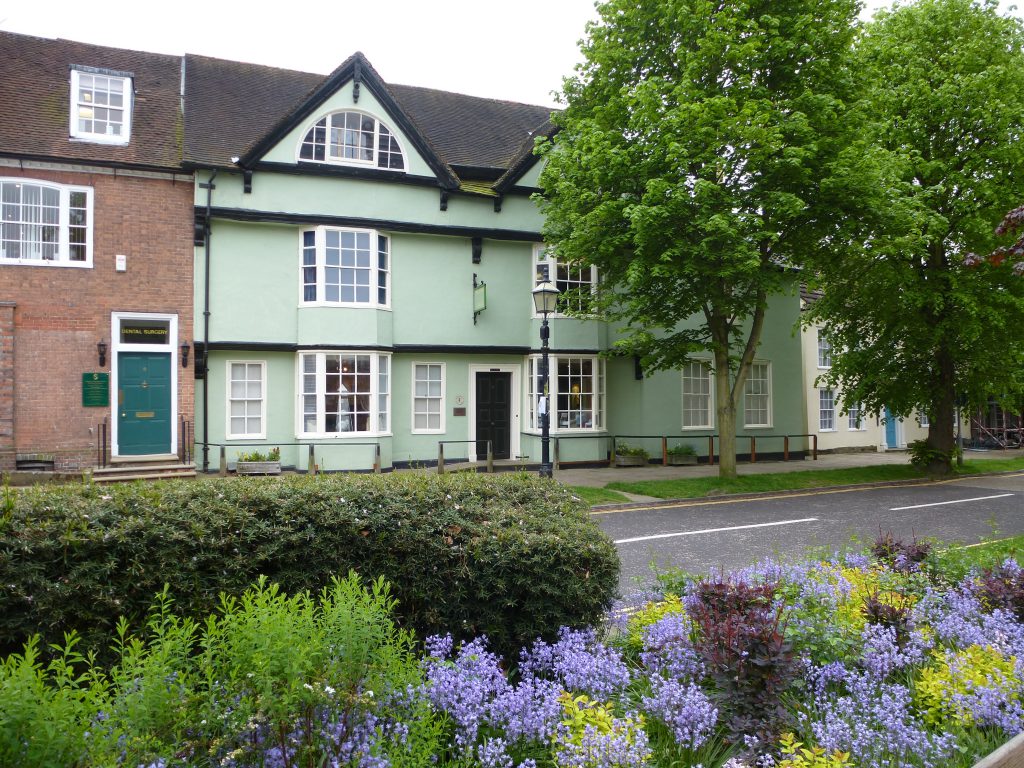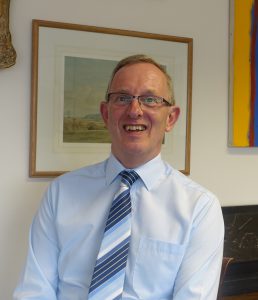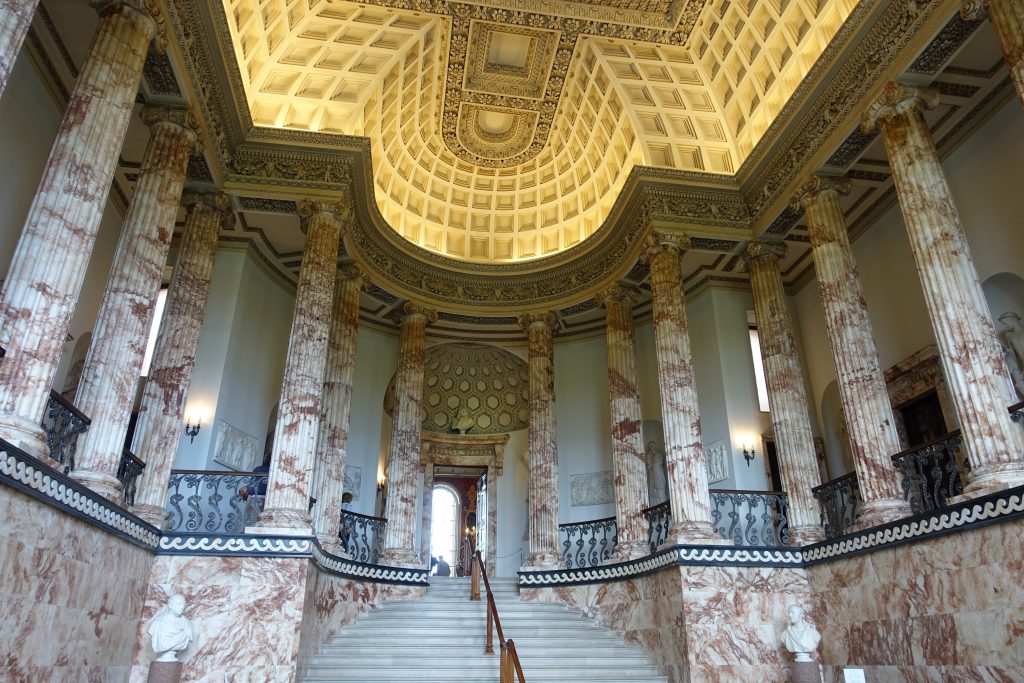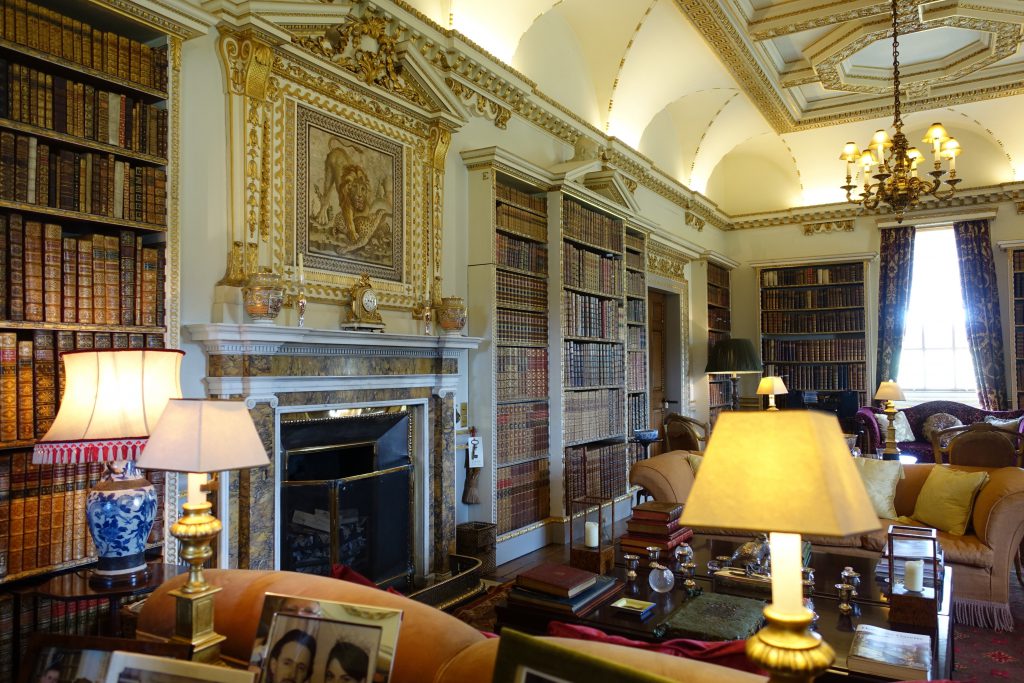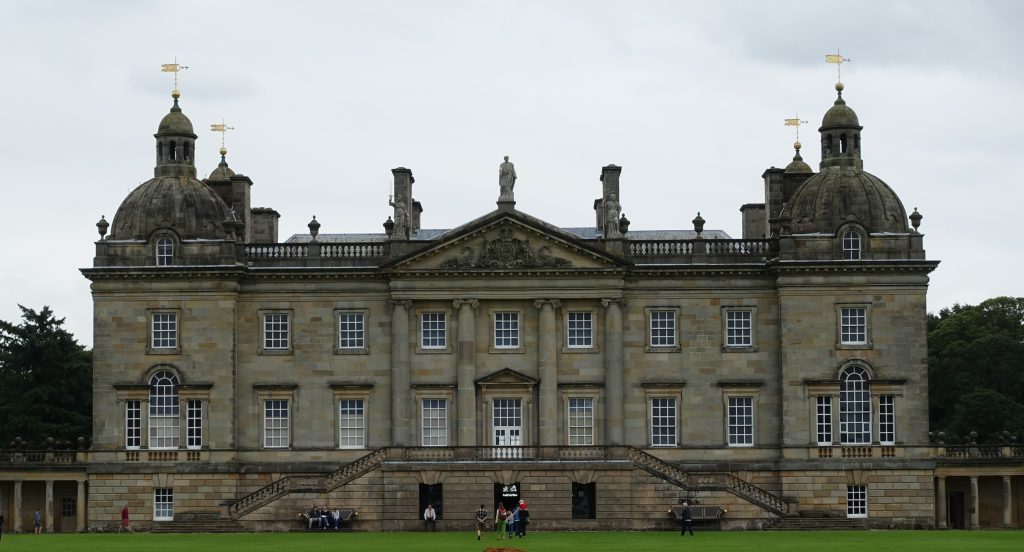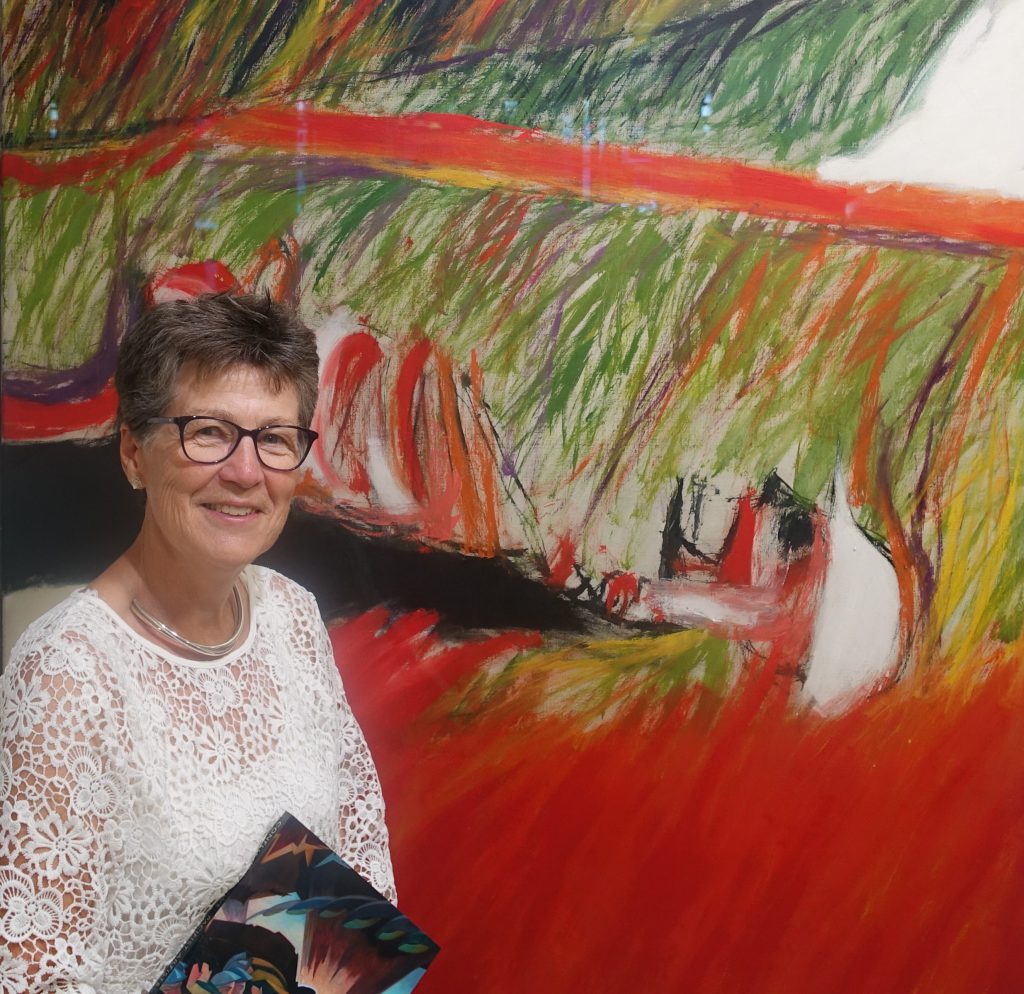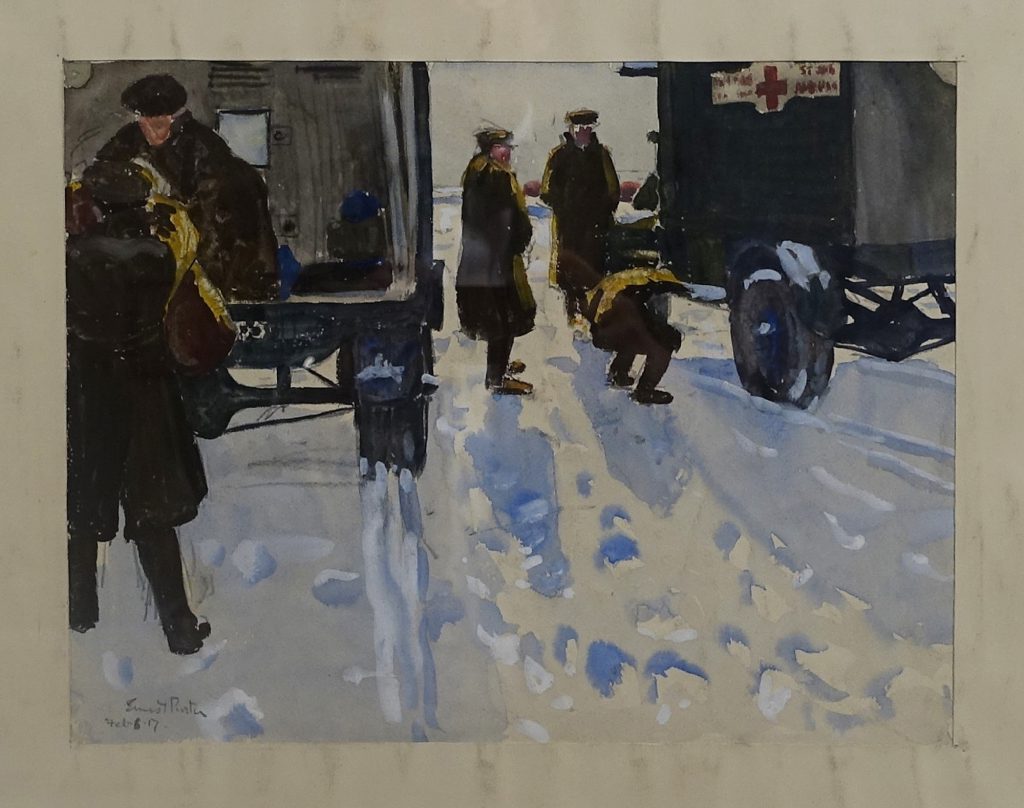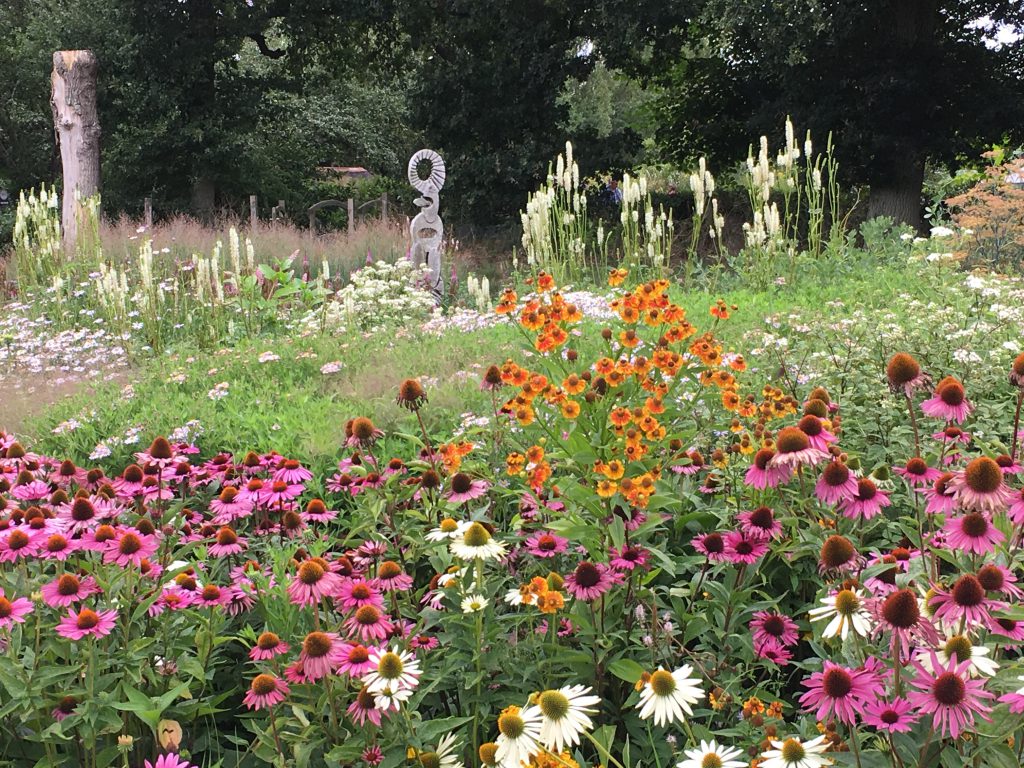
This week I am excited to be visiting the Sussex Prairie garden at Morlands Farm, Henfield, created and designed by Pauline and Paul McBride.
I pass some happy pigs beneath the canopy of oaks as I walk towards the garden. As the path opens into bright daylight your senses are immediately captured by the scale, colour, light, texture and movement expressed in the planting and design – it is really beautiful.
In the first border I come to the swathes of raspberry pink and white Echinacea play against the Helenium’s flash of orange and red. Beyond, the Deschampsia cespitosa ‘Goldtau’ grasses with their gossamer like flower plumes have matured into a warm golden colour which contrast with the strong vertical of the white Sanguisorba canadensis.
I catch up with Pauline and Paul McBride on the farm terrace amongst the nursery plants for sale outside their splendid tearooms. The terrace overlooks the gardens.
They are delighted as I explain that their garden is food for my heart. Pauline says “It is a beautiful thing – people are moved by it.”
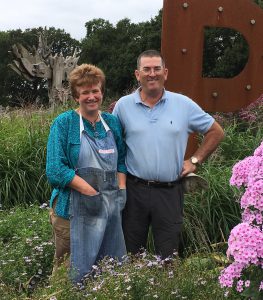
I comment on the exquisite synergy of the plants in the border I have just encountered. Pauline responds “The plants are like our friends we knew how they would behave and how to put them together from the gardens we have worked on.” From the wilds of Rajasthan, to the quiet beech wood valleys of Luxembourg Paul and Pauline McBride have been creating gardens for over 30 years.
I am fascinated by the way that the garden invites you into itself. Wherever you are your eye is met by stunningly conceived views with layered perspective. Pauline explains “It’s to do with the big spiral design. We drew up huge plans for the gardens – each designed in minute detail – we had to think how it would work together, the structure, plants and use of grasses. The gardens readily invite you in with their pathways through the borders in a very calming and seductive way. We want people to engage with the garden – be close to the bees and insects, brush against the plants, engage with them, touch them and experience the fragrance and a freedom as the garden takes on a life of its own and becomes something extraordinary.”
The naturalistic planting belies the underpinning of the generous discipline of their design. Pauline and Paul’s lifetimes work and experience is distilled into their Prairie garden.
Pauline continues “The garden is still evolving as we add new plants to the mix. The garden itself is changing as it seeds and cross-pollinates…the plants have done it themselves it is very exciting.”
Preparations are underway for the Unusual Plant and Garden Fair this coming Sunday. Pauline explains “We invite a great selection of specialist nurseries with their wonderful plants – it’s rare to find so many specialist plants men and women in one place. There’s Jazz and great food too, it’s a real day out!”
This festival of plants will be held this coming Sunday 2nd September 2018, 11am to 5pm at Sussex Prairies, Morlands Farm, Wheatsheaf Road, Henfield, West Sussex, BN5 9AT. To find out more about the gardens and this event visit www.sussexprairies.co.uk or telephone 01273 495902.
By Rupert Toovey, a senior director of Toovey’s, the leading fine art auction house in West Sussex, based on the A24 at Washington. Originally published in the West Sussex Gazette.
